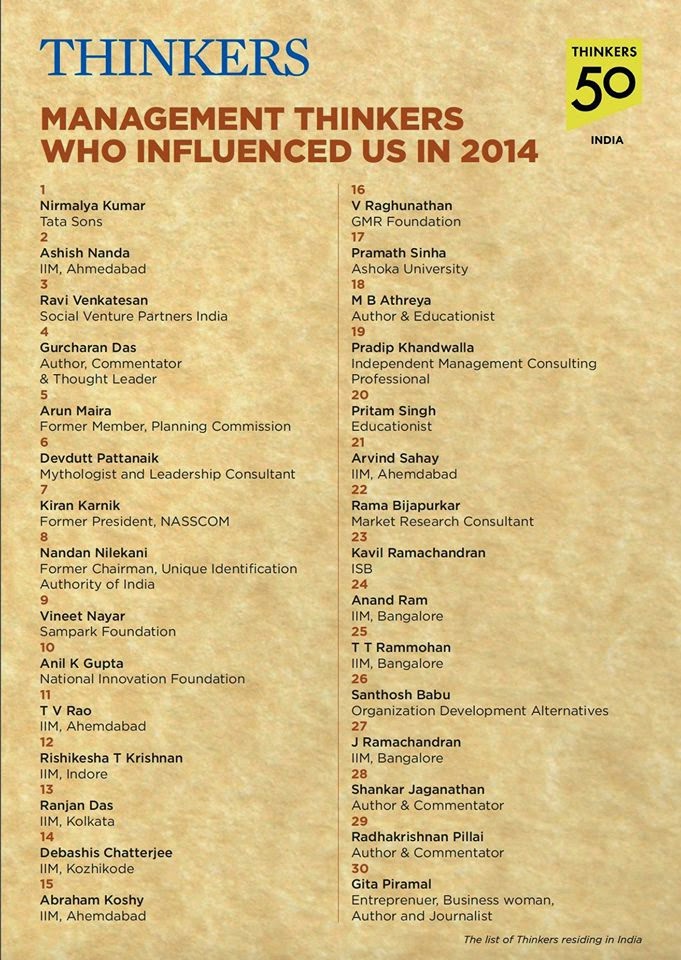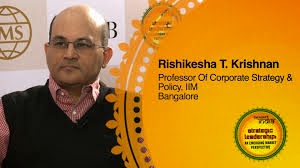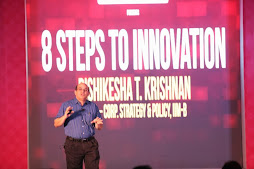The annual financial results of Infosys Ltd. announced yesterday triggered a major slide on Indian stock exchanges as the company not only failed to meet the “guidance” numbers it had given out but also projected muted growth in the current financial year. Perhaps anticipating this, in recent weeks, analysts have been quite harsh on the company, with some arguing that it can no longer be considered the bellwether of the Indian IT industry.
But, my recent visit to Infosys Labs, the R&D centre of the company, suggests that it may be premature to knock Infosys off the pedestal it has occupied for several years. Infosys Labs is currently home to more than 600 experts across domains and a further expansion is on the anvil. As of March 31, 2011, Infosys had been granted 22 US patents, and had 357 patent applications pending in the US and India. Infosys spent 2.1% of its FY2011 revenue on R&D.
In the 1990s, Infosys identified the importance of quality, and was one of the first IT services companies to put in place a robust system to ensure high levels of quality in the delivery of its software services. The company also recognized that it needed to create an engine to hire, train and deploy engineers across disciplines to be able to scale-up its workforce. In 2000, the company realized that it needed to create a simple yet scalable Project Budgeting System to be able to manage the next phase of growth. These initiatives enabled the company to grow rapidly in the last decade without too many hiccups.
Could R&D, as reflected in the current project portfolio of Infosys Labs, be the vehicle to drive the next phase of growth of the company?
One thing you have to grant Infosys is that they have a clear philosophy and vision to drive their innovation initiatives. The company believes that there are seven themes around which it can contribute to “Building Tomorrow’s Enterprise.” These are: Digital consumers, Emerging economies, Sustainable tomorrow, Smarter organizations, New commerce, Pervasive computing and the Healthcare economy. Infosys believes that it can work with its clients to optimize (enhance efficiency), transform (grow existing businesses) and innovate (create new growth opportunities) their companies in line with this vision of Building Tomorrow’s Enterprise.
The company has specific targets for this R&D-driven growth. Infosys CEO Shibulal told reporters yesterday after announcing the company’s financial results that 6.2% of the company’s revenues last quarter came from products and platforms. The company’s target is to raise this to 33%.
During my visit to Infosys, I had the opportunity to see demos of some of the platforms that have already been launched. Some highlights:
It’s really heartening to see these platforms providing Infosys an opportunity to work closely with Indian customers like Airtel and Aircel (in FY2011, almost 98% of the revenues of Infosys came from exports!).
Earlier, intellectual property provided the differentiator for services. Now, Infosys looks at services as a way to deliver the benefit of its intellectual property to clients!
Nevertheless, reaching the 33% target set by Mr. Shibulal will be a challenge. The sales and marketing team of Infosys will have to rise to the challenge of selling a more productized offering. The platforms will have to be continuously upgraded and enhanced even if immediate revenues are not forthcoming. And the domain and software research folks will have to provide genuine differentiators if Infosys is to compete with the likes of IBM.
But what I found during the half day I spent at Infosys Labs is that there is a quiet confidence that these challenges can be addressed. R&D at Infosys has moved, over the last decade, from being a demonstrator of technological capabilities to a potential source of competitive advantage. Let’s hope that this potential is realized.
But, my recent visit to Infosys Labs, the R&D centre of the company, suggests that it may be premature to knock Infosys off the pedestal it has occupied for several years. Infosys Labs is currently home to more than 600 experts across domains and a further expansion is on the anvil. As of March 31, 2011, Infosys had been granted 22 US patents, and had 357 patent applications pending in the US and India. Infosys spent 2.1% of its FY2011 revenue on R&D.
In the 1990s, Infosys identified the importance of quality, and was one of the first IT services companies to put in place a robust system to ensure high levels of quality in the delivery of its software services. The company also recognized that it needed to create an engine to hire, train and deploy engineers across disciplines to be able to scale-up its workforce. In 2000, the company realized that it needed to create a simple yet scalable Project Budgeting System to be able to manage the next phase of growth. These initiatives enabled the company to grow rapidly in the last decade without too many hiccups.
Could R&D, as reflected in the current project portfolio of Infosys Labs, be the vehicle to drive the next phase of growth of the company?
One thing you have to grant Infosys is that they have a clear philosophy and vision to drive their innovation initiatives. The company believes that there are seven themes around which it can contribute to “Building Tomorrow’s Enterprise.” These are: Digital consumers, Emerging economies, Sustainable tomorrow, Smarter organizations, New commerce, Pervasive computing and the Healthcare economy. Infosys believes that it can work with its clients to optimize (enhance efficiency), transform (grow existing businesses) and innovate (create new growth opportunities) their companies in line with this vision of Building Tomorrow’s Enterprise.
The company has specific targets for this R&D-driven growth. Infosys CEO Shibulal told reporters yesterday after announcing the company’s financial results that 6.2% of the company’s revenues last quarter came from products and platforms. The company’s target is to raise this to 33%.
During my visit to Infosys, I had the opportunity to see demos of some of the platforms that have already been launched. Some highlights:
- The company’s WalletEdge platform was recently chosen by India’s leading mobile services company, Airtel, to power Airtel Money, India’s first mobile wallet service. This is expected to provide a big boost to mobile commerce in India, and also transform financial inclusion possibilities. In a recent blog post, Forrester’s Fred Giron believes that this deal points to the future of IT services in India, and the potential of IT service vendors to become “multistakeholder integration enablers.” (Visit http://blogs.forrester.com/fred_giron/12-03-07-why_the_recent_infosysairtel_deal_is_a_glimpse_into_the_future_of_it_services for more details)
- Another Indian mobile services company, Aircel, uses Flypp, the App management platform created by Infosys, for its popular “PocketApps” service. Use of Flypp provides easy access to the ecosystem of Independent Software Vendors (ISVs) developed by the company.
- A Digital Marketing Platform developed by Infosys jointly with Fabric, a WPP company, allows large companies to manage their global online digital marketing efforts through an integrated cloud-based platform. The benefits for the client are a uniform brand positioning, lower costs, better consumer/channel insights and superior analytics. Last month, one of the world’s largest pharmaceutical companies, GSK, signed up to use this platform to optimize its digital engagement with consumers and healthcare professionals.
- The Shopping Trip360 platform makes innovative use of sensor technologies to track shopper buying patterns and keep track of inventories. One of the largest retailers, Metro, uses this platform in its “Future Store Initiative.”
It’s really heartening to see these platforms providing Infosys an opportunity to work closely with Indian customers like Airtel and Aircel (in FY2011, almost 98% of the revenues of Infosys came from exports!).
Earlier, intellectual property provided the differentiator for services. Now, Infosys looks at services as a way to deliver the benefit of its intellectual property to clients!
Nevertheless, reaching the 33% target set by Mr. Shibulal will be a challenge. The sales and marketing team of Infosys will have to rise to the challenge of selling a more productized offering. The platforms will have to be continuously upgraded and enhanced even if immediate revenues are not forthcoming. And the domain and software research folks will have to provide genuine differentiators if Infosys is to compete with the likes of IBM.
But what I found during the half day I spent at Infosys Labs is that there is a quiet confidence that these challenges can be addressed. R&D at Infosys has moved, over the last decade, from being a demonstrator of technological capabilities to a potential source of competitive advantage. Let’s hope that this potential is realized.


















No comments:
Post a Comment